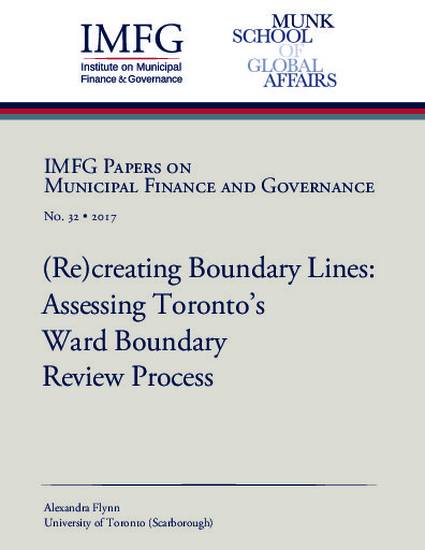
Popular Press
(Re)creating Boundary Lines: Assessing Toronto's Ward Boundary Review Process
IMFG Papers
(2017)
Abstract
When Toronto's Ward Boundary Review (WBR) began in 2013, the city's 44 wards varied widely in size, ranging from 45,000 to 90,000 residents. The WBR’s multi-year process was designed by staff and led by consultants, with ample opportunity for involvement by councillors. The final ward boundaries were approved in November 2016 without significant deviation from those recommended in the consultants’ report. The result was the addition of three new wards. Assuming there are no successful appeals of the decision, the new ward boundaries will be in place for the 2018 election. The ward boundary review raised significant questions about the regularity by which such reviews should be held, the role of city councillors as participants and decision-makers in the process, and the relationship between the WBR and a future governance review. This paper sets out the contested legal terrain within which the City of Toronto’s WBR took place and assesses possible next steps, including the grounds for a possible Ontario Municipal Board appeal. Ultimately, the paper concludes that wards are but one important component of municipal representation and governance.
Keywords
- city governance,
- electoral boundaries,
- municipal law
Disciplines
Publication Date
2017
Citation Information
Alexandra Flynn. "(Re)creating Boundary Lines: Assessing Toronto's Ward Boundary Review Process" IMFG Papers (2017) Available at: http://works.bepress.com/alexandra-flynn/11/
